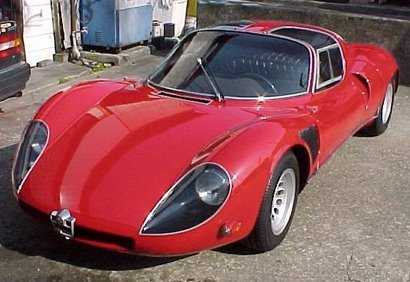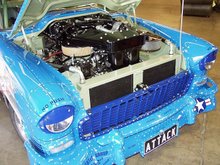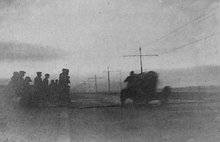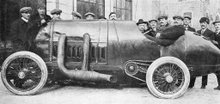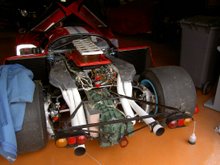I have received a response to my appeal “What would you do?” suggesting that I should write something about Fulvia suspension.
OK here I go: it works really well.
Seriously, I am grateful for the comment and as usual, propose to cover a few areas with my normal approach: i.e. with a view to modification. First though, an overview bearing in mind that I am discussing a 45 (in reality a 61) year-old design.
Using what used to be called “cart springs” in “pop” car magazines that wished to be derisive, it is truly amazing just how good the Fulvia’s suspension is and how well it works: not only is there a great deal of sheer grip but the ride quality is really excellent, especially for such a small car. How was it achieved?
Good question. From the point of view of the front it is not difficult to provide the answer: wishbones, in particular, long stiff wishbones: unequal-length, non-parallel wishbones at that. It is no accident that F1 cars use wishbones since this is in many ways the best method of keeping the relationship between the two wheels reasonably consistent through all the variations imposed by driving on a real road and of course, steering. The principal disadvantages are mainly seen from the point of view of the cost accountants and conceptual designers: wishbones are greedy for space, they have to be supported inside at four points, they limit steering lock and are costly and complex to make. For Lancia in the great days, such considerations were strictly secondary to the goal of making a car that had engineering integrity and was a pleasure to drive. I should add I suppose that thanks to the great advances in Computer Aided Design, damper design and materials technology, the ubiquitous “Macpherson” strut is now really a very satisfactory solution although I still insist that for ultimate “feel” the wishbone is the best approach as the Fulvia clearly demonstrates.

How not to arrange wishbones! Look at the LH front wheel's attitude. Parallel, equal-length wishbones on a R-Type MG. Picture source: here
For the rear, it is a little harder to establish the reasons for its success, however a simple beam axle has the advantage of keeping the wheels consistently aligned and vertical albeit at the cost of increased unsprung weight. The Panhard rod prevents sideways movement and the long springs provide good ride. Probably the rear suspension would be even better with a lightweight axle (and hubs!) and with the Panhard rod replaced with a Watts linkage or “Woblink”.
There are considerable differences between the Series 1 and Series II cars, and these account for the improved feel and communication experienced by the driver in the former cars. Differences at the rear are minor and need not concern us here, but the front is a different matter. I remarked above about the cost of wishbone suspension: the Series I cars must have been very costly to make. Looking at the inner end of the top wishbone there is a beautifully machined hollow tubular support which is a close fit into the wishbone “eyes”. Nylon bushes enclosed in a thin rubber outer are located in the aluminium towers that carry the suspension loads and connect the subframe to the car body. Inside these bushes are precision-machined steel bushes into which the tube fits. Finally the whole thing is clamped and the steel bushes move inside the nylon. Correct clamping is regulated by means of ground hard shims. Arrangements at the bottom are similar but with individual arrangements for the front and rear of the lower wishbone. Properly maintained, the system is very long lasting since of course it was properly conceived and manufactured.
The Series II system is much simpler. All the precision aspects are no longer there: there is merely a set of Silentblocs and a long bolt at the top, and Silentblocs on each side at the bottom again clamped with bolts.
What is astounding is that despite this compromise with the cost accountants, the SII Fulvias still handle very well indeed; all that is lost is some of the “feel” and delicacy that one experiences with a good SI.
The one, to me, unpleasant compromise at the front in all series, is the means of coupling the upper wishbone to the transverse leaf spring: the famous rubber. Consider how the suspension operates: as the wheel rises the upper wishbone moves towards the horizontal. At the same time (since they are joined) the spring is gradually straightened, so of course it effectively “lengthens” in positional terms. Of course as the wheel falls the process is reversed. This all means that the rubber is subjected to considerable shear loads and thus offers substantial resistance to suspension movement.
Additionally, given the tendency for the front spring to move axially (i.e. the outer ends move fore or aft) the rubber often receives an additional twist. This accounts for the bizarre forms sometimes encountered in these rubbers. Rubber, except for in a real Mini, is rarely good anywhere in a suspension system – except for cars designed for comfort - but as Colin Chapman famously remarked, “An ounce of rubber is worth a ton of theory”.
Next time I will look at some modifications.
À bientôt
 This time I have two little suggestions some of you might like.
This time I have two little suggestions some of you might like. In about 1985, I bought a special spanner from Harry Manning, which happily I still have, for undoing those blasted carburettor nuts. Someone who has worked on the Fanalone though had a brainwave: he found M8 nuts that have "built-in washers" and are just 10mm across the flats; one can undo them with a ¼" drive 10mm socket; hurrah. I think that the nuts are fitted to Peugeots and of course they are lighter than the 13mm originals. Incidentally, I used 12mm AF Mercedes-Benz exhaust nuts on my car but these are much better.
In about 1985, I bought a special spanner from Harry Manning, which happily I still have, for undoing those blasted carburettor nuts. Someone who has worked on the Fanalone though had a brainwave: he found M8 nuts that have "built-in washers" and are just 10mm across the flats; one can undo them with a ¼" drive 10mm socket; hurrah. I think that the nuts are fitted to Peugeots and of course they are lighter than the 13mm originals. Incidentally, I used 12mm AF Mercedes-Benz exhaust nuts on my car but these are much better. No, it's not some sort of repulsive fruit de mer, it's the remains of a lower ball-joint rubber from the Fanalone. As regular readers will know, the car competed in 26 rallies; the owner had experimented with various brake pads, one set of which resulted in smoke and blue discs... The rubber which as you may know is VERY close to the brake disc was simply cooked and had become brittle resulting in greasy brake discs... Not good. So I have renewed both bottom ball-joints and to provide some protection for the rubbers, fabricated a couple of simple heat shields which I hope should help. And one does not want the changing of bottom ball joints to be regular work does one?:
No, it's not some sort of repulsive fruit de mer, it's the remains of a lower ball-joint rubber from the Fanalone. As regular readers will know, the car competed in 26 rallies; the owner had experimented with various brake pads, one set of which resulted in smoke and blue discs... The rubber which as you may know is VERY close to the brake disc was simply cooked and had become brittle resulting in greasy brake discs... Not good. So I have renewed both bottom ball-joints and to provide some protection for the rubbers, fabricated a couple of simple heat shields which I hope should help. And one does not want the changing of bottom ball joints to be regular work does one?:
 Yes I know it's not truly artisanale metalwork, but they don't touch the discs and they should do the job!
Yes I know it's not truly artisanale metalwork, but they don't touch the discs and they should do the job!


























